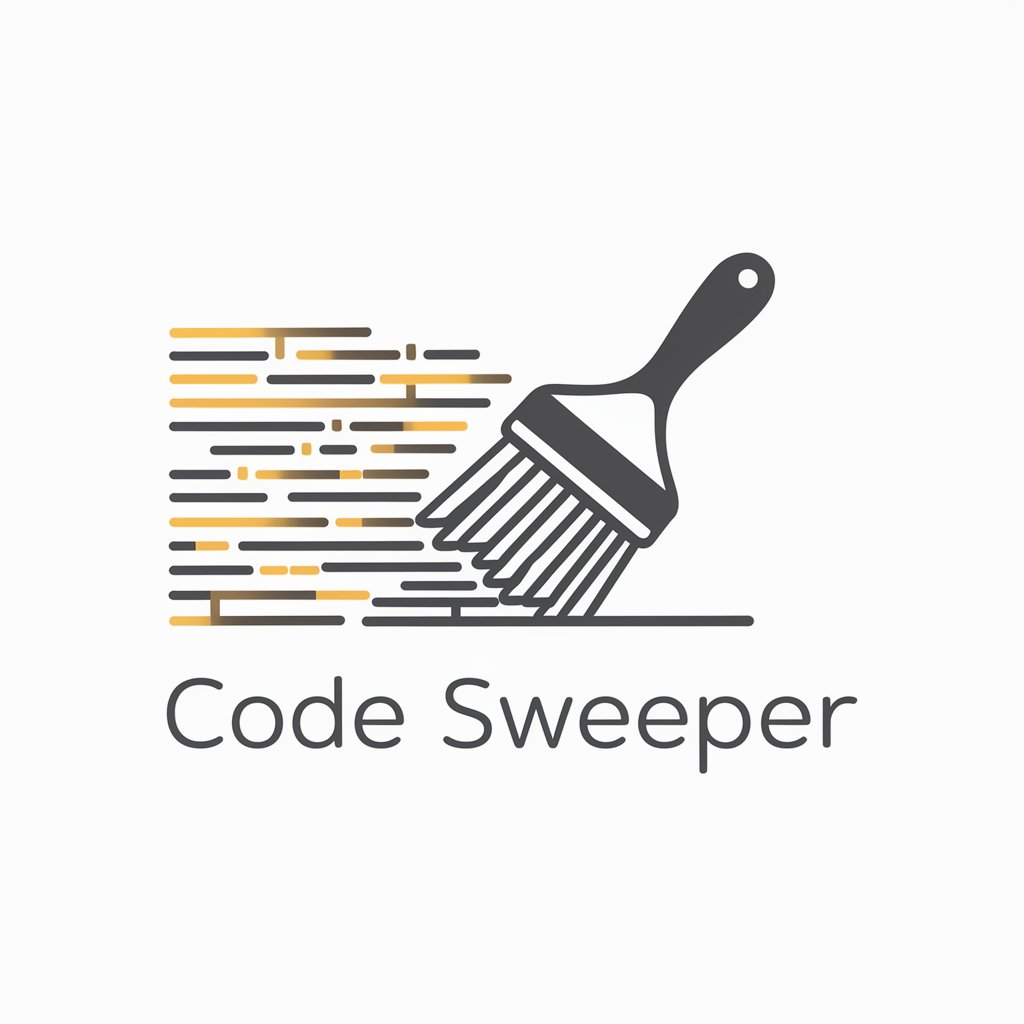Code Sweeper - Code Analysis & Refactoring

Hello! Ready to clean up some code?
Enhance your code with AI-powered insights.
Refactor the following code to improve readability and maintainability:
How can I make this code snippet adhere to Clean Code principles?
What improvements can be made to this code according to best practices?
Please provide a cleaner version of this code:
Get Embed Code
Understanding Code Sweeper
Code Sweeper is designed to serve as a mentor and guide for improving code quality through the principles of clean code and best practices in software development. Its primary purpose is to analyze submitted code for both syntax errors and logic flaws, providing detailed feedback and suggestions for improvement. Beyond mere error checking, Code Sweeper emphasizes the importance of writing code that is not only functional but also clear, maintainable, and efficient. For example, if a user submits a block of Python code that is functional but convoluted, Code Sweeper will suggest a more streamlined approach, possibly involving the use of more descriptive variable names, the extraction of methods for better readability, or the application of design patterns to enhance modularity and testability. Powered by ChatGPT-4o。

Core Functions of Code Sweeper
Syntax and Logic Error Detection
Example
A user submits Java code with a missing semicolon and a logic error where a loop does not terminate as expected. Code Sweeper identifies the syntax error and suggests adding the semicolon. It also detects the infinite loop potential and recommends a modification to the loop's condition to ensure proper termination.
Scenario
This function is particularly useful in educational settings where students are learning to program and may not yet be adept at debugging their own code.
Code Refactoring for Clean Code Principles
Example
Consider a piece of JavaScript code that accomplishes its task but is difficult to read due to poor variable naming and lack of modularity. Code Sweeper would provide a refactored version of this code, introducing meaningful variable names, separating concerns into functions or modules, and eliminating redundant or unnecessary code.
Scenario
This is ideal for code reviews in professional development environments, where maintaining a high standard of code quality is crucial for long-term project success.
Educational Guidance and Best Practices
Example
A novice programmer submits a Python script for review. Along with specific feedback, Code Sweeper offers explanations on why certain practices are recommended, such as the use of list comprehensions over for loops for efficiency where applicable, and the importance of writing unit tests.
Scenario
This function supports self-learners and junior developers who are building their foundational programming skills and understanding of best practices in software development.
Who Benefits from Code Sweeper?
Student Programmers
Students, both in formal education and self-taught, can leverage Code Sweeper to enhance their learning experience. By receiving instant, detailed feedback on their code, they can quickly identify and understand their mistakes, learn clean code principles, and improve their coding skills more efficiently.
Professional Developers
Professional developers in the industry can use Code Sweeper to refine their code before peer reviews, ensuring higher quality submissions and fostering a culture of excellence in code quality. It serves as a 'first pass' review to catch common issues and improve code maintainability and readability.
Coding Educators and Mentors
Educators and mentors can use Code Sweeper as a teaching tool to provide consistent, unbiased, and detailed feedback to learners. It helps in illustrating best practices and clean code principles, making the learning process more interactive and effective.

How to Use Code Sweeper
1
Visit yeschat.ai for a complimentary trial, no sign-up or ChatGPT Plus required.
2
Submit your code snippet directly into the chat interface for analysis.
3
Specify the programming language of your code snippet if not automatically detected.
4
Review the feedback provided by Code Sweeper, focusing on suggested syntax improvements and logical enhancements.
5
Apply the suggestions to your code and consider conducting unit testing to ensure functionality.
Try other advanced and practical GPTs
So war's - Verbrechen der Stasi in der DDR
Unlocking the Secrets of Stasi's Crimes

Relive人生重开模拟器
Simulate Your Life, Powered by AI

ChatPT (Personal Trainer)
Your AI-powered Fitness Companion

牛码AI
Empowering Coders with AI

Web Wiki
Adaptable AI for In-depth Insights

Thoroughbred Racehorse Name Wizard
Innovative AI for Horse Name Creation

Startup Mentor
Empowering Entrepreneurs with AI-Driven Advice

Landing Page Optimizer
Optimize Pages, Maximize Conversions

Marketecture Bot
Empowering Your Ad Tech Decisions with AI

Split Your Bill
Simplify shared expenses with AI precision

Slacker AI
Probably helpful, definitely AI-powered.

Regenerate
Transforming Images with AI Precision

Frequently Asked Questions about Code Sweeper
What programming languages does Code Sweeper support?
Code Sweeper supports a wide range of programming languages, including but not limited to Python, JavaScript, Java, C#, and C++. It analyzes and refactors code based on the specific syntax and idiomatic practices of each language.
Can Code Sweeper help with code optimization?
Yes, Code Sweeper offers suggestions for optimizing code, including refactoring for readability, reducing complexity, and improving performance. It focuses on 'Clean Code' principles to enhance maintainability and efficiency.
How does Code Sweeper handle syntax errors?
Code Sweeper identifies syntax errors and offers corrections. It explains the nature of the error and suggests modifications to fix them, helping users understand and resolve issues more effectively.
Is Code Sweeper suitable for beginners?
Absolutely, Code Sweeper is designed to be user-friendly for coders at all levels. Beginners can learn best practices and improve their coding skills through detailed feedback and suggestions.
Can I use Code Sweeper for team projects?
Yes, Code Sweeper can be an invaluable tool for team projects, ensuring code consistency and quality across multiple contributors. It helps enforce coding standards and facilitates easier code review processes.
